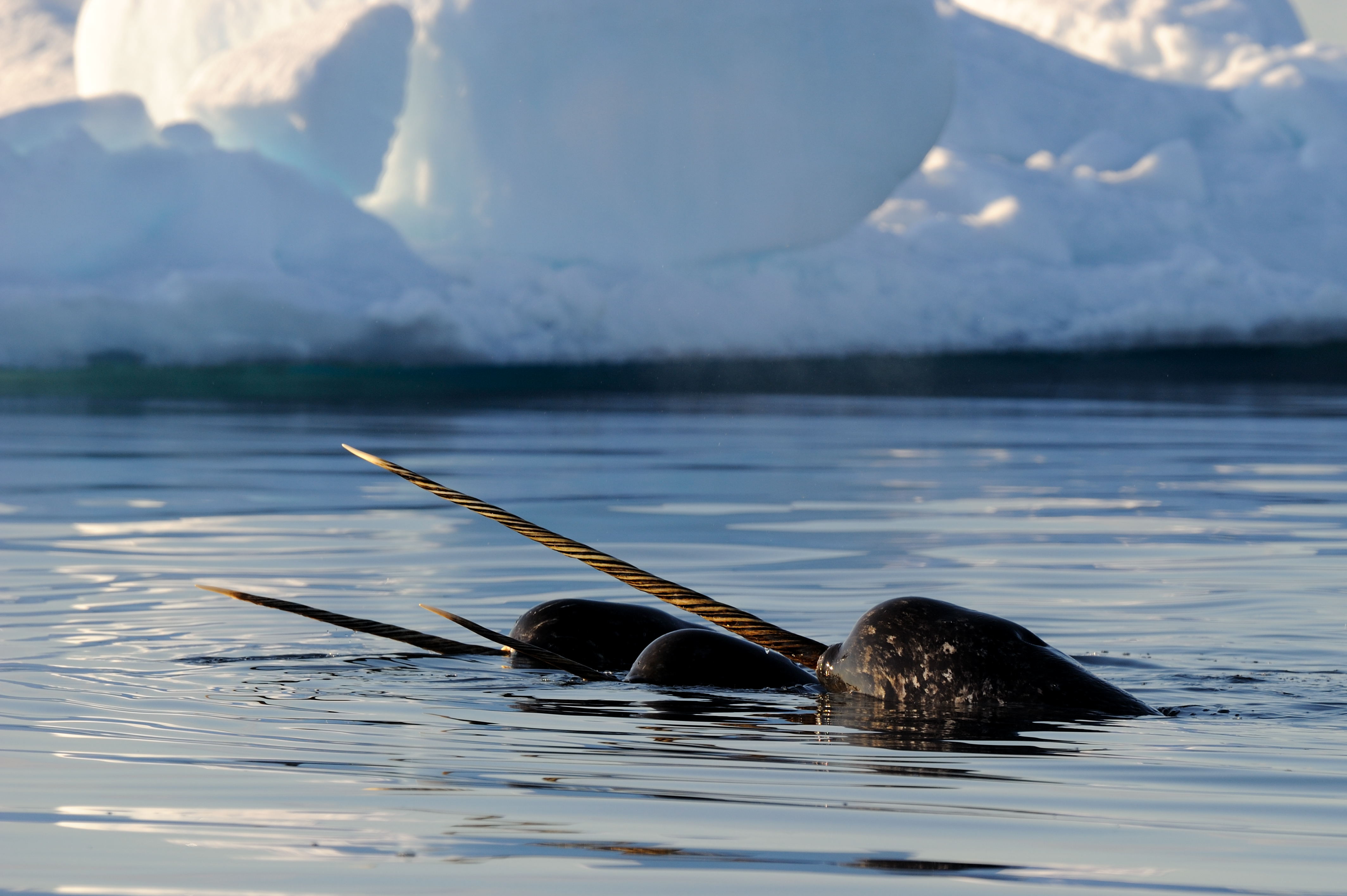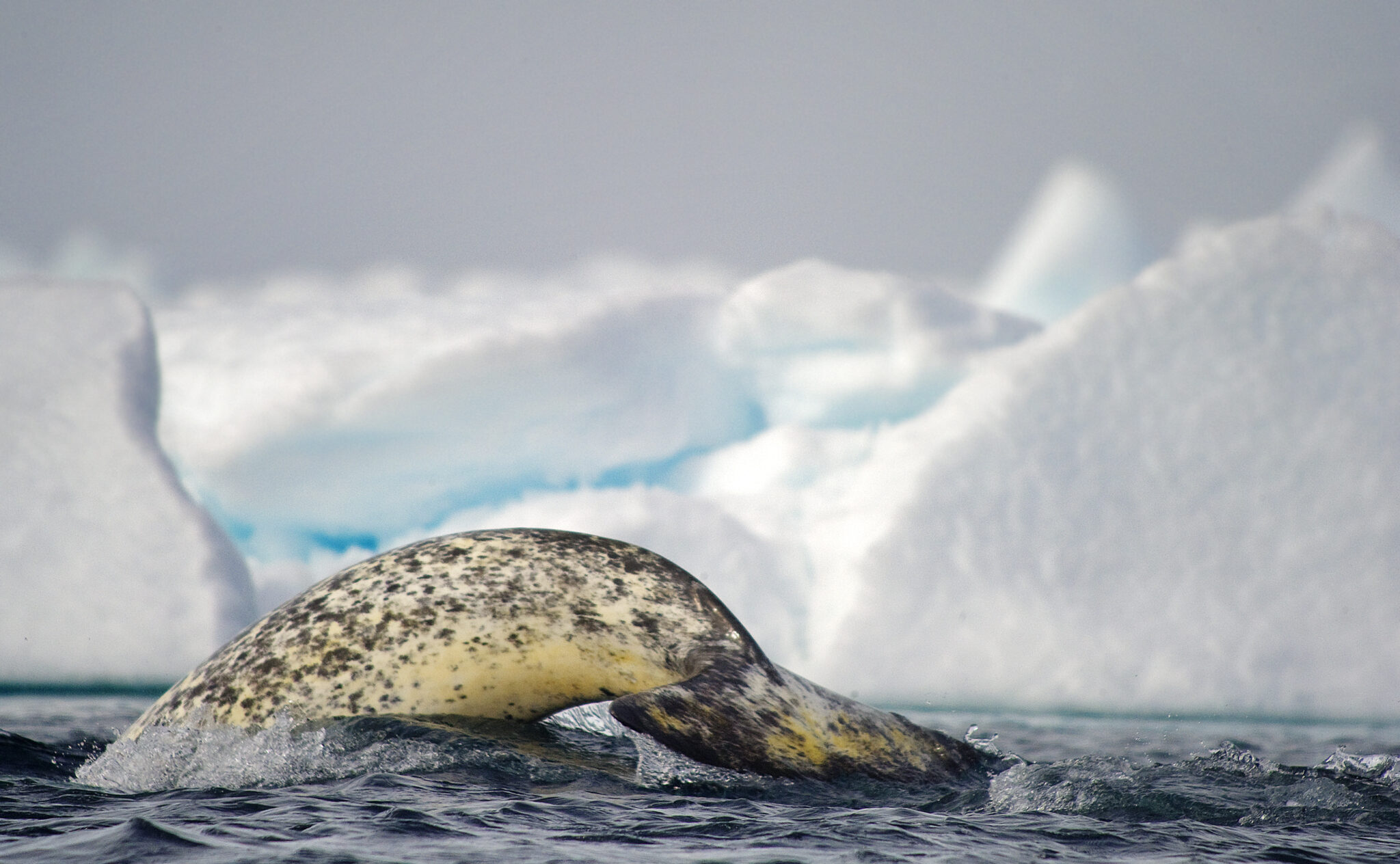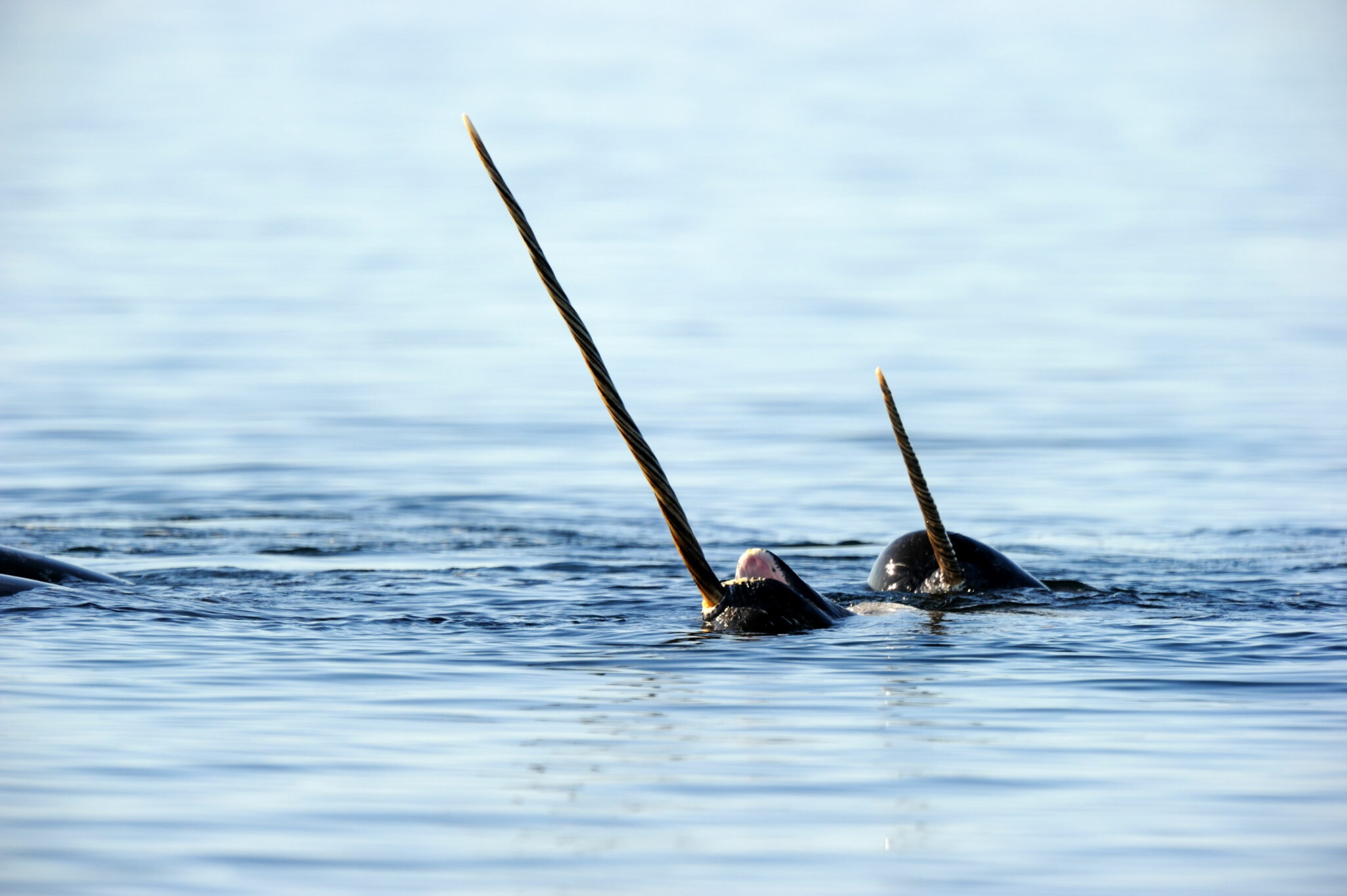Narwhal whales spent much of their life among sea ice. Waiting for frozen sea ice to break up into pack ice and becoming open water is part of their annual migrations.
But sea ice is more than an intricate maze keeping narwhal from their summer territories. It can also provide protection and a safe place as they travel through unfamiliar waters.
Come find out the ways that narwhals use sea ice throughout the year.
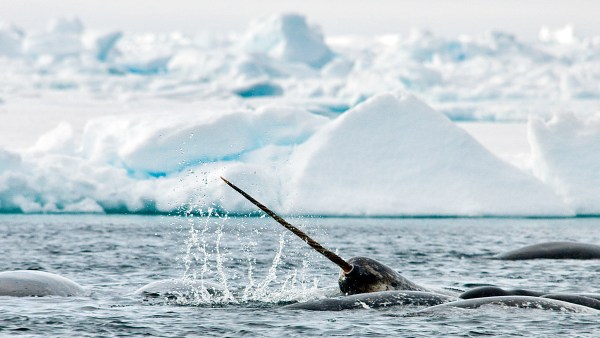
Deep-Sea Diving Through Winter
Narwhal spend their whole lives in Arctic waters around Canada, Greenland and Russia. About 75% of the world’s population spend their winter within Baffin Bay, Davis Strait, and the Labrador Sea. This population waits until the sea ice begins to recede migrates into the Canadian Arctic.
Their winter homes can be almost entirely frozen over with some having only 10% open water. They will dive great distances to feed on halibut, cod, shrimp, and squid.
Narwhal are famous for how deep they can dive making some of the deepest recorded dives of any marine mammal. They will dive about 800 metres (2,620 feet) about 15 times a day looking for food.
The deepest they can reach is 1,500 metres (4,920) feet and can last 25 minutes underwater before surfacing for air.
Finding a breathing hole is vital to their survival and they can travel a distance of 1,450 metres (4,760 feet) between breathing holes to search for food.
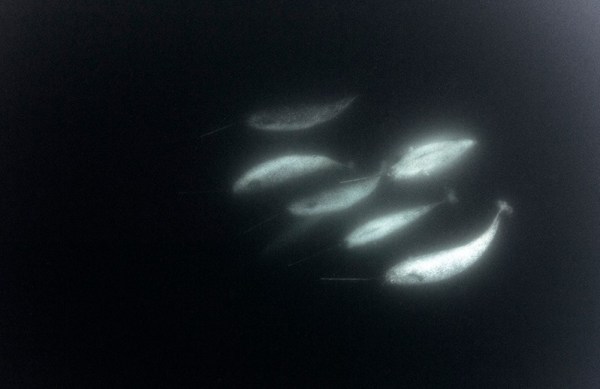
Why They Live Among The Ice
There are two good reasons that narwhal whales live in such a frozen world. The first is that there are few predators in these places, and the second is that it is a place to hide from the few predators around.
The main predators to the narwhal are orca whales, polar bears, and human hunters. All three of these have one thing in common, they cannot reach a narwhal hiding right under the ice.
Narwhals do not have a dorsal fin running along their back, which means they can hide right up against the ice. Whereas, orcas are well known for their large dorsal fins. This makes the frozen sea ice a haven from the killer whales.
Human hunters will hunt whales from a boat or wait from the edge of the ice so as long as the narwhal retreats to under the ice they are safe.
Similarly, the best hope that a polar bear has of catching a whale is by waiting at the floe edge. This rarely succeeds since narwhal can dive deep and wait below the ice.
The incredible feats that have to go through just to survive deter a lot of animals from living in the Arctic waters.
However, when it comes to the food that the narwhals are looking for there is little competition. As long as they can dive deep enough there is an abundance of fish and crustaceans that can live below the ice.
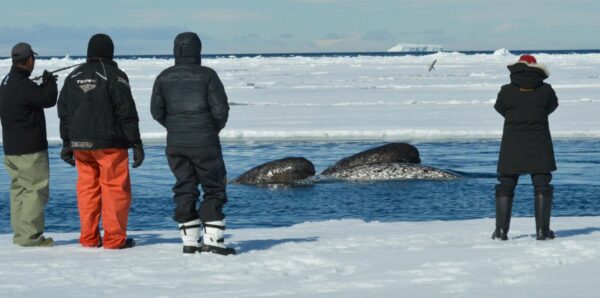
Changing Ice Means Time To Migrate
As you can imagine, even narwhal excitedly wait for the ice to begin receding so they can go to slightly warmer water. So, when they notice the first signs of spring it is a happy time.
Their reliance on large amounts of sea ice for protection becomes a reliance on knowing how to navigate the cracks in the ice.
In fact, it is believed that one of the reasons narwhals rub their tusks against each other is to pass on information. This might be one leader of a pod telling another which way is a dead-end or where the oxygen levels are higher in the water.
The spring is a very social time for narwhals who may have to wait for days or weeks for a crack to form. Multiple pods can come to splash and search for openings together.
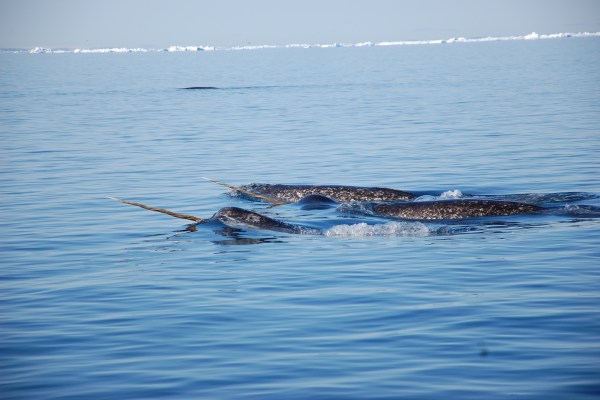
Experience The Arctic On A Safari
Get chances to view elusive Arctic wildlife and experience the majesty of the Arctic on safaris almost year-round. View all Arctic Safaris here.
Ready for adventure? Contact our Arctic Travel Advisors to book.
We now have a Gear Shop where you can browse some of the best outdoor clothing and equipment to buy or gift to friends and family.
Are you still curious about the many wonders of the Arctic or looking for more interesting content then explore more blogs here!
By: Mathew Whitelaw


